Contents
Description
Talking about this fruit In the minds of most people, nectarine is inextricably linked with the peach. Just like a pear with an apple, a watermelon with a melon, a cucumber with a tomato.
This is natural, because the two indicated fruits are similar to each other, like twins, that is, there seem to be similarities, but still they are not the same, not identical. And sometimes it is very difficult for a person to determine what he loves more – nectarine or peach?
Perhaps the article on nectarine will help you decide which one you like more, peach or nectarine. Today, dear reader, we will talk about what nectarine is and what this “something” is eaten with.
Does this amazing fruit cause confusion not only among ordinary wholesome food lovers (like you and me), but also among scientists? The fact is that there are still heated debates around him: where did the nectarine come from?
As you probably already guessed, the product of interest to us is a relative of the peach, and, to be botanically accurate, its subspecies. The official name of the nectarine is “naked peach” (in Latin it sounds like “Prunus persica”) or, in simple human terms, “bald peach”. By the way, the people very often call him that, because, in fact, it is so.
Among non-botanists, there is an opinion that this fruit is the fruit of the love of peach and plum. Others believe that his parents were an apple and a peach. And some even suspect apricot in a love affair. No, all these versions are, of course, romantic, but they have nothing to do with reality.
In fact, most researchers are convinced that nectarine is nothing more than a mutant that was born as a result of natural crossing of various species of common peach.
It is also interesting that on ordinary peach trees, sometimes unusual for this fruit “bald” fruits appear spontaneously.
Georraphy of the product
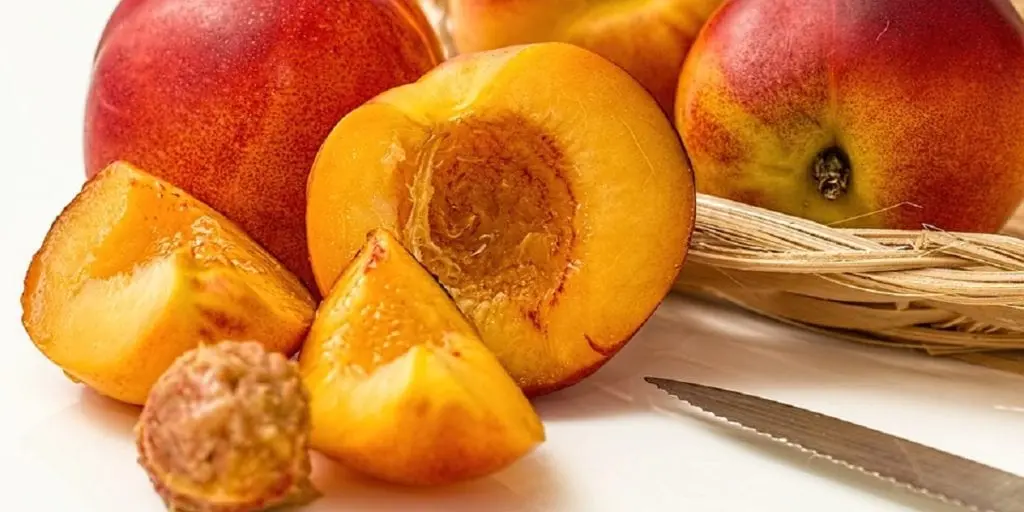
All the same botanical scientists are inclined to believe that the birthplace of nectarine is China, which, as you know, gave the world a great variety of unique fruits. This is where this pretty smooth fruit appeared about 2000 years ago. The Europeans met him much later – only in the 16th century. It is known that the first mention of nectarine in English appeared in 1616.
The “finest hour” for this plant did not come immediately, it was fully appreciated only in the twentieth century. It was then, thanks to the efforts of breeders, that new large-fruited varieties of nectarines with impressive taste appeared, and they began to rapidly spread throughout the world.
Currently, the main suppliers of these sweet aromatic fruits are China, Greece, Tunisia, Israel, Italy, as well as the former Yugoslavia. Some frost-resistant varieties of nectarines have taken root well in the North Caucasus.
Nutritional value and composition of nectarine
Nectarine alkalizes your body well, as it has an acidic pH of 3.9 – 4.2.
Vitamins and minerals
C, B4, B3, E, B5, B1, B2, B6, K, P, Mg, Ca, Fe, Cu, Zn
- Caloric content 44 kcal
- Proteins 1.06 g
- Fat 0.32 g
- Carbohydrates 8.85 g
Taste of nectarines
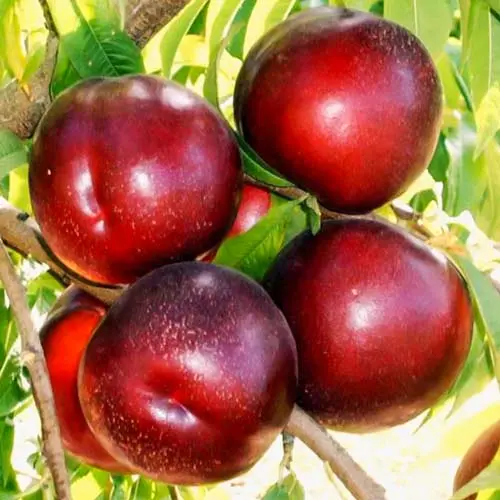
Nectarine pulp is denser than peach pulp (while the skin is thinner), and therefore, in my opinion, they saturate much better.
The tastes of these similar fruits are really very similar, but still real professionals (I mean mostly vegetarians and raw foodists now!) Can easily tell them apart. The peach is very sweet and delicate, and the nectarine, despite its sweetness, has a slight bitterness in its taste, which vaguely resembles almonds, and the skin gives a subtle sourness.
So, nectarine can be preferred to peach if at the moment you want to get satiated as soon as possible, you do not have the opportunity to thoroughly wash off its not very pleasant fluff from the peach, and also in the case when the sugary peach sweetness is already boring.
The use of nectarines in cooking
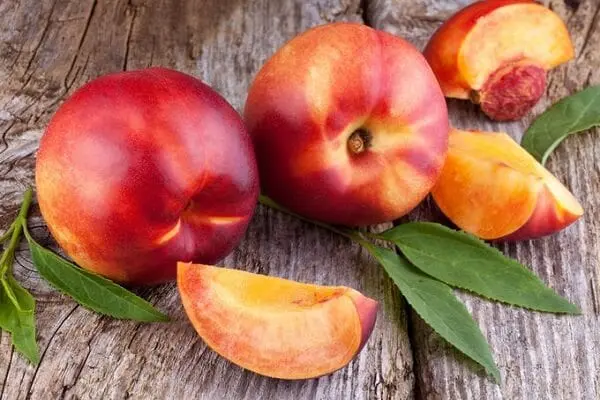
Breakfast nectarines is a great idea! They are filling, juicy, and rich in nutrients. They can be eaten either separately from other foods or combined with other sweet and sour-sweet fruits: apples, bananas, peaches, plums, pears, mangoes, apricots, and others.
Add them to your green smoothies and smoothies, try making nectarine juice and feel like an Olympian god drinking sweet nectar.
In summer, it is appropriate to prepare sweet fruit ice from nectarines – just grind their pulp in a blender, add a little honey if necessary and freeze. Also, this mass can be used as a topping for ice cream, including vegan “ice cream” from bananas.
If you still consume dairy products, you have the opportunity to make natural homemade yoghurt with pieces of nectarine, mix them with cottage cheese or soft cheese, and you can add sour cream to your fruit salad. However, fruits are naturally not compatible with milk, and therefore I advise you to avoid meeting such a dubious gastronomic duo!
Fans of original dishes cook unusual sauces based on these fruits, and also put them in thick vegetable soups and vegetarian stews, in rice and millet. Just please, be careful about your culinary delights. By their nature, fruits are compatible only with their own kind, and therefore complex food variations can cause indigestion.
A more traditional use for these sweet fruits is to make baked goods from them. They can be wrapped in croissants, pies and tortillas, put in pies, dumplings and pancakes.
In addition, nectarines are often found on the surface of birthday cakes and pastries as a delicious natural decoration. Delicious jams, preserves, marmalades, confitures, marmalade, jelly, marshmallow, dried fruits, candied fruits are obtained from aromatic juicy nectarine fruits. It is only better to cook all this exclusively at home or buy in specialized eco-stores, so that, along with processed fruits, you do not absorb mountains of preservatives.
The ideal way to consume nectarines, as well as other gifts of Mother Nature, is to eat them in their original form. This way you will not only preserve the unique taste of each specific product, but also get the maximum benefit from it, that is, saturate your body with valuable nutrients.
The benefits of nectarines

These fruits are popular all over the world not only because of their impressive taste characteristics, but also because they have pronounced healing properties. How can nectarines be good for you?
- Regular consumption of these fruits is an effective prevention of hypertension and atherosclerosis. Nectarines remove excess fluid from the body and, thereby, have a beneficial effect on the condition of the blood.
- Nectarine or a couple of such fruits, eaten on an empty stomach, half an hour before the main meal, starts the digestion process and helps to digest fatty heavy food. Naturally, you should never eat these and other fruits after such dishes, otherwise you risk getting an upset stomach.
- Natural fiber, which is part of nectarines, improves bowel function, normalizes the digestion process, cleanses the digestive tract from toxins and toxins, and also removes excess harmful cholesterol from the body. A decrease in the level of this substance in the blood, in turn, has a positive effect on the state of the heart and blood vessels.
- Due to the properties listed in the previous paragraph, these fruits (in reasonable quantities, of course) contribute to getting rid of excess weight.
- And nectarines can also relieve constipation, even chronic – you just need to include these fruits or freshly squeezed juice from them in your diet and take on an empty stomach 20-30 minutes before meals.
- The presence of vitamin C in the composition of these fruits endows them with an antioxidant effect – they stop inflammatory processes in the body, prevent the destruction of cells by free radicals, and improve metabolism.
- These natural antioxidants improve the condition of the skin by providing it with optimal hydration and thus preventing the formation of wrinkles and premature aging.
- Potassium contained in nectarines has a beneficial effect on the state of the nervous, muscular and cardiovascular systems.
- Scientists have concluded that these unique fruits also have some anti-cancer activity due to pectins, which destroy pathogens in our body.
- The nectarines, which have a rich composition of nutrients and rather dense pulp, are ideal for a good start to the day – eaten for breakfast, these fruits will saturate you for a long time, quench your thirst, and also provide the body with vitamins, minerals and energy for several hours.
The harm of nectarines
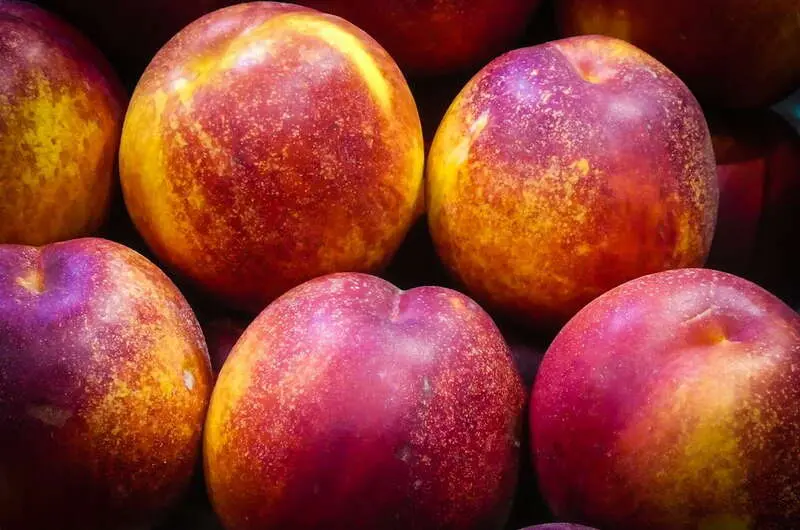
It is quite natural that, along with their beneficial properties, these fruits, like any others, are capable of showing their negative qualities. So, for example, nectarines are not recommended for people with diseases of the biliary tract, as they activate the processes of production and excretion of bile. The affected organs simply will not cope with such an accelerated rhythm.
Since these fruits remove excess fluid from the body, it is quite logical that their use speeds up the process of urination, and this, you see, is not always appropriate. Therefore, if you have an important meeting, you should not refresh yourself with nectarines before it! In addition, increased urination in winter can lead to hypothermia, so if you are a raw foodist, keep this in mind and try to eat these fruits in the warm season or limit their use during the cold season.
Ayurveda – the ancient Indian science of life and health – recommends eating fruits in the morning (until 4 pm), as they represent solar energy and are practically indigestible in the evening.
And this, as you know, negatively affects the digestion process and becomes a source of toxins and toxins in the body.
By the way, modern medicine, or rather some of its representatives, also do not recommend using nectarines in the dark. So, a raw food diet, and the features of the structure and functioning of the human body have not yet been canceled – be careful with yourself.
If you have bowel problems or have flatulence, nectarines are unlikely to please you. Of course, they will amuse the taste buds, but the indicated digestive organ can upset even more.
5 Interesting facts about nectarines
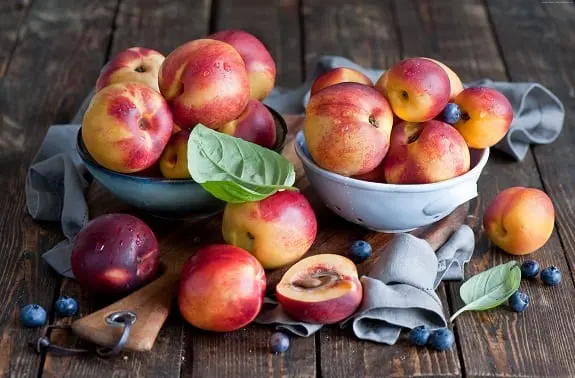
- An American botanist-breeder named Luther Burbank, who lived in the mid-19th and early 20th centuries, who managed to breed a thornless cactus, a seedless plum, a sunberry nightshade, a pineapple-scented quince, a large tuberous potato and other unique plants, alas, so and could not give the world a new kind of nectarine that would include the sweetness of a peach, the smoothness of nectarine, a slight almond bitterness, and the absence of pits. However, he still managed to become the creator of some sweet nectarines.
- Nectarine trees have one curious feature – the most delicious and largest fruits on them are located closer to the center, that is, near the trunk, or closer to the soil, because experienced gardeners tend to breed undersized specimens in the form of shrubs with several trunks.
- In humans, marriages between close relatives are prohibited, but among plants this is a common thing. In addition, the offspring from such unions tend to have impressive palatability. So, picherin – a rather large fruit of the love of peach and nectarine – combines the taste and aroma of these two fruits, but at the same time has the smoothness of the latter.
- Mango nectarine, despite its name, is indirectly related to mango – this hybrid obtained by crossing two varieties of nectarine, in taste and pulp consistency is not much different from exotic mango.
- A mutant with the complex name “nectakotum” and no less complex taste, outwardly similar to a large nectarine with plum skin, was born as a result of combining plum, apricot and nectarine into one whole.
How to choose nectrine
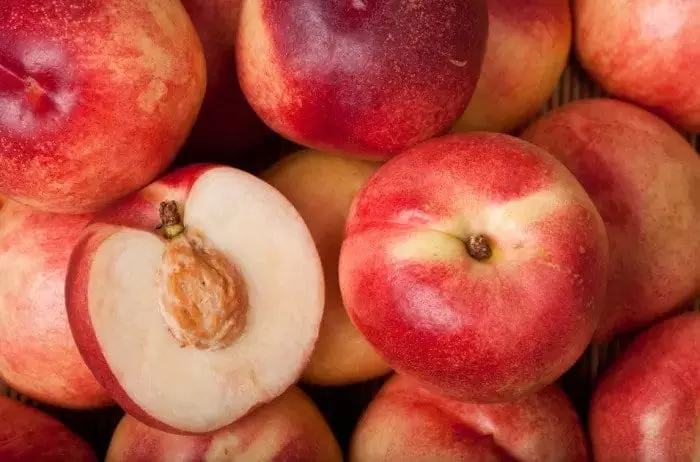
- Appearance
Nectarines should not be too shiny – this could be a sign that they have been waxed. It is best to take bright yellow fruits with red sides, but if they are pink, this is an indicator that the fruit is not yet ripe. Make sure there are no stains on the surface of the fruit.
The peach should not look too bright, with a natural yellow-red hue. Make sure that the peach skin is flat, without spots, wrinkles, or depressions. If dark dents appear on the fruit, it means that the decay process has already begun in it.
- Hardness
The nectarine should not be too soft, but it is not recommended to take a hard one either – it is better to choose fruits, the pulp of which gives in a little when pressed, but does not squeeze.
The same goes for peaches. Excessive softness indicates that the fruits are overripe, and if the fruits are hard, then, on the contrary, they are still green.
- Smell
High-quality nectarines and peaches must have a pronounced sweet smell. Its absence may indicate that the fruits are either immature or contain a large amount of pesticides.
- Pulp
Ripe nectarine, depending on the variety, should have yellow or red streaks in the pulp, and if they are absent, this most often indicates the content of nitrates in the fruit.
In peaches, the flesh should be yellow or white with pinkish veins. According to experts, white peaches are generally sweeter.









